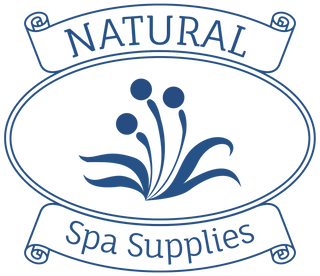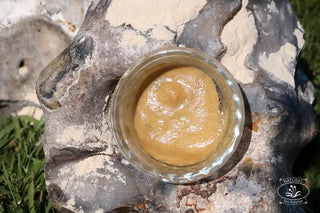Thanaka is a traditional cosmetic paste made from ground bark or wood of the Thanaka tree (scientifically known as Limonia acidissima) and is widely used in Myanmar (Burma). It holds great cultural significance and has been an integral part of Burmese culture for centuries. Here are some key aspects of the cultural significance of Thanaka:
Thanaka is primarily used as a beauty product and skincare remedy. It is applied on the face, especially on cheeks, chin, and forehead, as a natural sunscreen, moisturizer, and a skin cooling agent. The paste is believed to provide various skincare benefits, such as reducing acne, soothing inflammation, and preventing sunburn. Mixed with oil, thanaka is used to permanently remove unwanted body hair.
Thanaka is a symbol of Burmese cultural identity and is often seen as a mark of beauty and elegance. It is commonly worn by people of all ages, from children to the elderly, and is considered a traditional form of adornment. The distinctive yellowish-white patterns created by the application of Thanaka also contribute to the unique visual appeal of Myanmar.
The use of Thanaka has been passed down through generations and is deeply rooted in Burmese traditions. It is a common sight in rural areas where traditional customs and practices are still prevalent. Applying Thanaka is often a part of daily routines, and it is used not only for cosmetic purposes but also as a way to keep the skin healthy and cool in Myanmar's hot and humid climate.
Thanaka is often applied by family members or friends as a social activity, creating a sense of togetherness and bonding. It is not uncommon to see groups of people, particularly women and girls, sitting together and applying Thanaka on each other's faces. This practice strengthens social ties and promotes a sense of community.
Thanaka plays a significant role in various traditional festivals and ceremonies in Myanmar. During events like Thingyan (Water Festival) and other religious or cultural celebrations, people decorate their faces and bodies with intricate Thanaka patterns, adding to the festive atmosphere and cultural richness.
Thanaka is a traditional cosmetic and skincare product that has been used in Myanmar (formerly known as Burma) for centuries. It holds a significant place in Burmese culture and has a rich history dating back thousands of years.
The origins of thanaka can be traced back to the Pyu civilization, one of the earliest recorded civilizations in Myanmar. Pyu City-States (c. 2nd century BCE-9th century CE): The Pyu city-states, such as Sri Ksetra, Halin, and Beikthano, thrived in central Myanmar. They had a strong influence from Indian culture, including Buddhism, trade relations, and the use of Sanskrit as a written language.
It is believed that the practice of using thanaka as a cosmetic and skincare product began during this time. The Pyu people used to grind the bark, wood, or roots of the thanaka tree (botanically known as Limonia acidissima) into a paste and apply it on their faces for beauty and protection against the sun.
Over time, the use of thanaka spread to other ethnic groups in Myanmar, including the Bamar (the dominant ethnic group), Shan, Kayah, and Karen people. It became an integral part of their culture and identity. Thanaka was used by both men and women, and it was considered a symbol of beauty, elegance, and grace.
The thanaka paste is made by grinding the bark, wood, or roots of the thanaka tree on a circular stone slab known as kyauk pyin. Water is added gradually to the ground material until a thick paste is formed. This paste is then applied to the face, primarily on the cheeks, chin, and forehead, using either fingers or a brush. It is left on the skin for several hours or overnight, and then washed off.
Besides its cosmetic use, thanaka also has several practical benefits. The paste acts as a natural sunscreen, protecting the skin from the harsh tropical sun of Myanmar. It also has antimicrobial and anti-inflammatory properties, which help in keeping the skin cool, preventing acne, and reducing skin irritation. Our thanaka is ground for us by the producer and our product page explains how to mix thanaka for different applications.
In recent years, there has been a resurgence of interest in thanaka both within Myanmar and internationally. It has gained popularity as a natural and organic skincare product, and many beauty and skincare companies have started incorporating thanaka into their products.
Today, thanaka is not only used in its traditional form as a paste but is also available in various forms such as powders, creams, lotions, and soaps. Its popularity has spread beyond Myanmar, with people from different countries embracing thanaka for its skincare benefits and cultural significance.
Overall, Thanaka holds immense cultural significance in Myanmar, serving as a beauty product, a symbol of identity, a tradition passed down through generations, and a way to foster social connections. Its unique properties and visual appeal have made it an integral part of Burmese culture and a cherished tradition that continues to thrive.
In 2020 Myanmar underwent a military coup. Luckily, I had established my thanaka source a before that took place. This meant that the sea ports were closed as well as the borders with Bangladesh, Laos, China and Thailand. In the meantime the price of the thanaka logs shot up as well. While my order could not be exported, I could at least get a trickle of news from the producer. It wasn't always good. During the upheaval the producers factory was destroyed. The female owner, left homeless and without her production facility was distraught.
I did wonder if I would ever be able to obtain the thanaka which had been paid for. There was only one way to re-establish production and that was to send out more money to help finance a new grinding machine and the erection of a new building. Although I trust the people in my supply chain, it was a long, precarious wait and a financial risk. At length I got the news that some thanaka had been ground on the new equipment, the border had opened and some of the stock was released.
By using thanaka for skin care and hair removal we are keeping a traditional practise alive, supporting a valiant female producer, who like Queen Pan Htwar, ruler of the Pye people, believing in the in the merits of thanaka, refused to give up.
I hope that you will try our hard won source of Thanaka and that you will discover its benefits for skin purification and hair removal for yourself.


